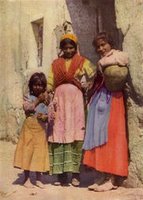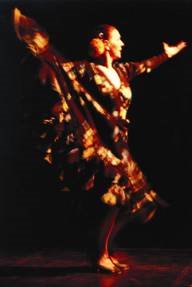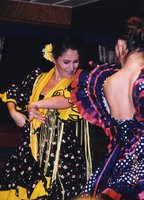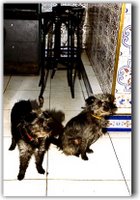
The people love faeries, and consider a gecko on the house to be good luck. So Newt fit right in and is considered the perfect travelling companion. Magda said we would have much luck on our journey, so hopefully that means we will complete our journey on time and win the bet!
Americans, on the other hand, are not always considered wanted visitors because they are rude and demanding. Sometimes the locals are as suspicious of the Americans as they are the gypsies. Why? Because they never know what to expect from the Americans. Most of the people they encounter are friendly, and courteous guests, while others forget they are guests here and act as if the local population is here to serve them.
I've mentioned the local opinion of the gypsies several times, but have not explained why. I sometimes forget you cannot see the expressions on the faces of the people.

The history of the gypsy people varies greatly, depending on who you talk to, because their history has been handed down through the generations by means of story telling. As a result, some stories contradict each other because their oral history has been distorted over time and was not recorded for many centuries.
It is thought that gypsies first lived in the Punjab region of India, but fled about 1000 years ago, during the wars between the Mongols and the Arabs. Many settled in Egypt, and after a time, began to identify with that region. Again, because their history was not recorded in any way, many following generations forgot their roots. Consequently, the gypsies (who call themselves Rom) were dubbed 'Gypcians' in English, and was later changed to gypsies. Today, in Spanish, they are known as gitanos, but in Old Spanish this word referred to Egyptians.
Linguistic research has provided much of the gypsy history known today, but because they are a nomadic people, their language, Romani Chib, while varied in different regions, still presents evidence of a common origin, with elements of Punjabi, Hindi, and Dardic languages. European gypsies have also borrowed from the Armenian and Iranian languages, as they passed through areas where those languages are spoken on their way to Europe. The gypsies of Spain, in the far west of Europe, even show linguistic evidence of having sojourned in Greece before arriving in Spain.
After their arrival in 1425, the gypsies moved to various regions throughout Spain, and were forced to steal and beg for money. This earned them a bad reputation which still exists today. Because they were a small, scattered population and not a political threat, gypsies were not tortured to the same extent as the Moors and Jews in the 16th Century. Some were, however, persecuted during that time due to their non-Christian beliefs. Some were forced into Christian marriages, and society deliberately excluded the gypsy people by banning them from events and denying their language and rituals. Even in the 18th Century, the gypsies were still feared and forced to live a certain distance outside of Spanish cities.
Gypsies have more rights than their ancestors did, but they are still nomadic, and negative stereotypes are still common. In Spain's larger cities, beggars and pickpockets are common, but these are not necessarily real gypsies. Contrary to their reputation, many gypsies are hardworking people.
As you probably already have guessed, while some gypsies do work that is readily accepted by mainstream society, such as flamenco dancing or tatting lace, others earn their livelihood by less accepted practices. While many Spanish gypsies have adopted the Catholic beliefs of the people around them, they have not given up their Romaniya beliefs. These include such practices as fortune telling, which they do for profit, but not among themselves; another type of fortune telling which they do practise among themselves, called 'advising', which is a kind of healing ritual; and last but not least, curses.
Gypsy Rules of Etiquette
If you wish to avoid a gypsy curse, you must first remember that the gypsies really do believe in things that society might think superstitious. So it is probably a bad idea to giggle or scoff if an approaching fortune teller claims to know your destiny, and who your true love shall be.
Sometimes gypsies perform on the street. Gypsies are well known for their beautiful flamenco dancing, and in such places as Las Ramblas in Barcelona, you can often catch a lively performance. As with any street performance though, you should always throw a coin if you decide to take a picture of the dancer. Otherwise, you ought not be surprised if the gypsy dancer chases you down and forces you to pay.
Finally, gypsies who are skilled in crafts often sell them on the street. For example, outside the cathedral in Segovia, Spain, several gypsy women regularly sell exquisite handmade lace tablecloths. As with any street merchant, they can be somewhat aggressive, so if uninterested, you might choose to avoid them altogether. However, travellers need not be afraid to buy something. You need only to take out the money discreetly before approaching them, as with any street merchant. Then after a bit of bartering, you can walk away with a gorgeous handmade souvenir.
While the gypsies may seem frightening to some, they do add components of mystery and even beauty to Spanish culture.

